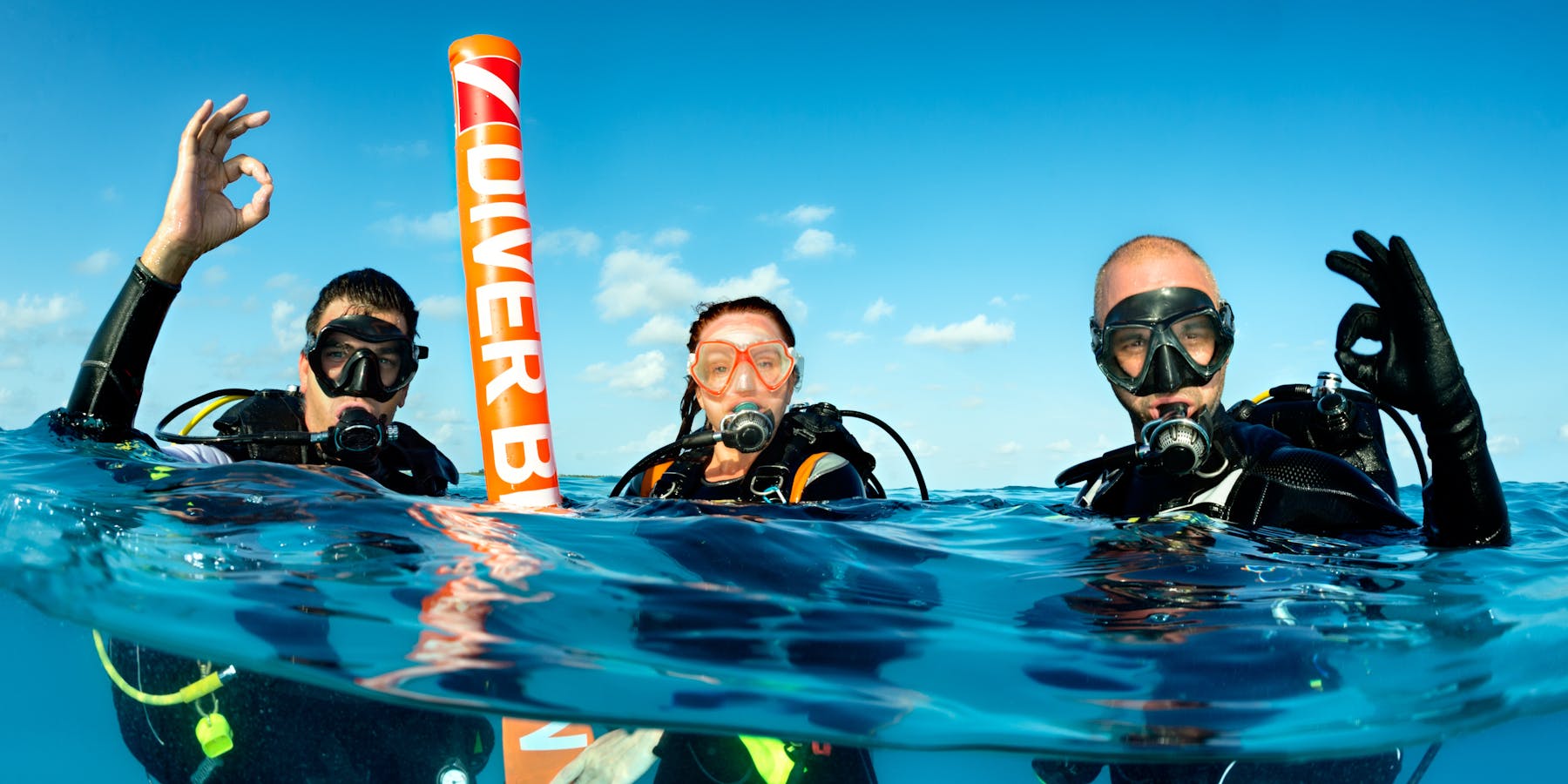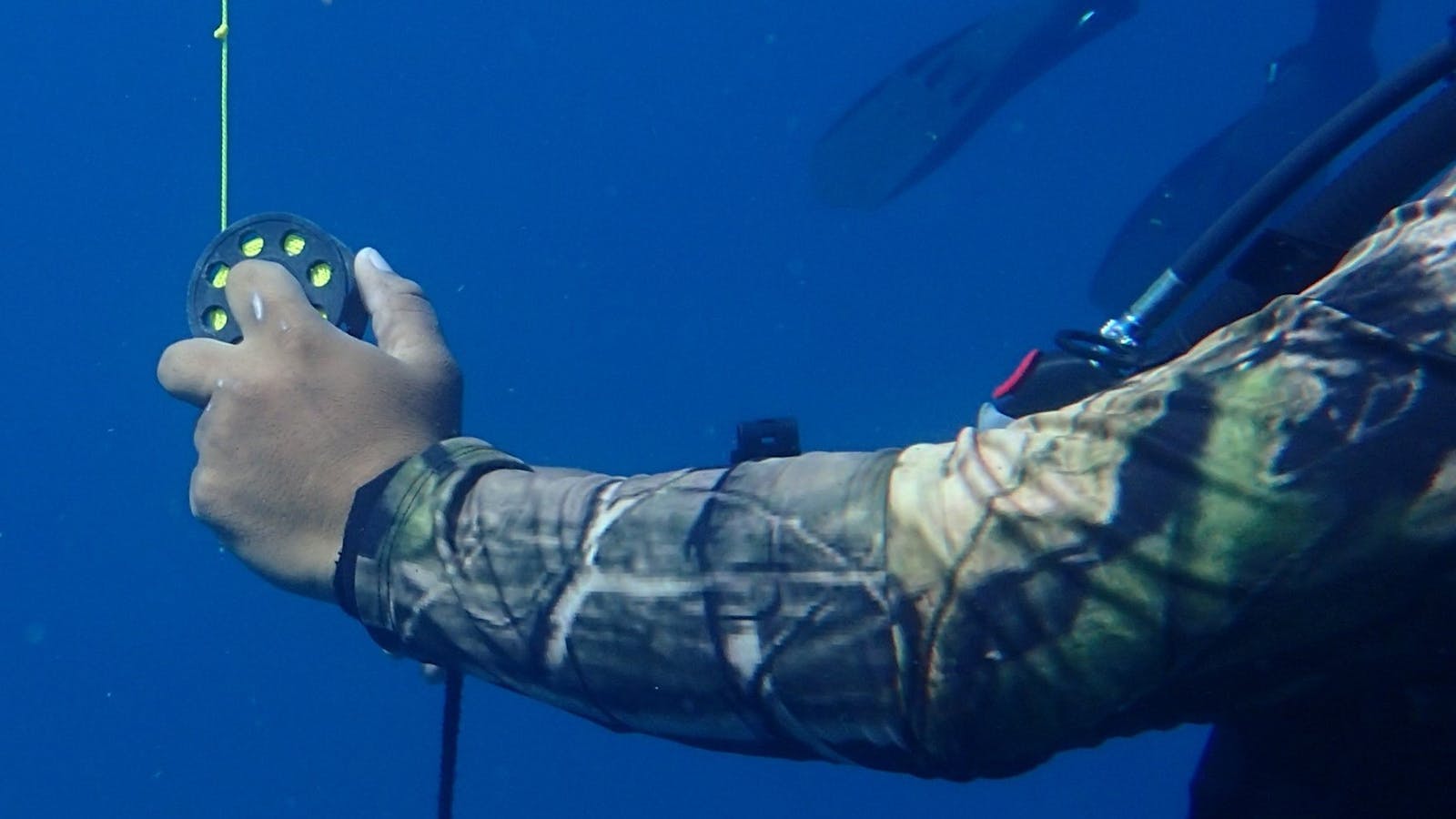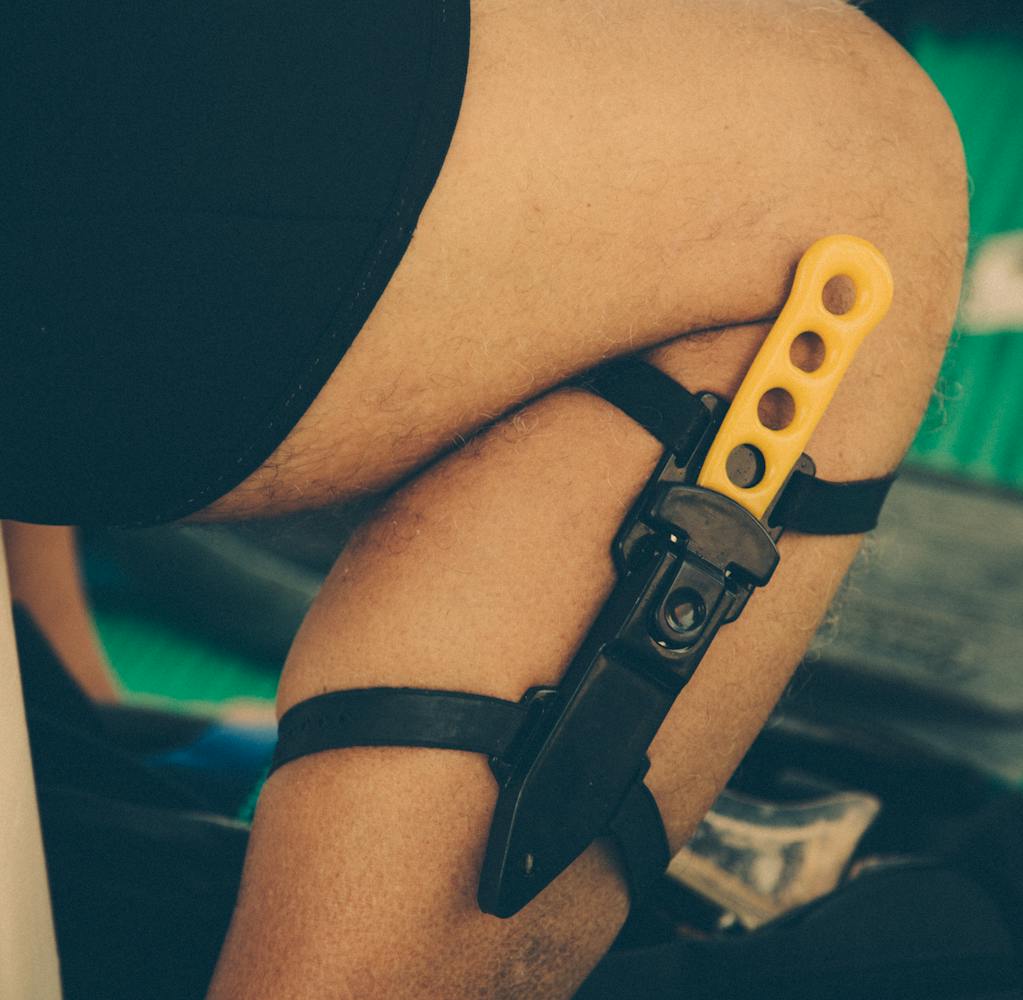Free Shipping on orders of $49+ | Signup for Direct Rewards
Free Shipping on orders of $49+ | Free Store Pickup | Signup for Direct Rewards
Free Shipping on orders of $49+ | Signup for Direct Rewards
Free Shipping on orders of $49+ | Free Store Pickup | Signup for Direct Rewards

“There's no harm in hoping for the best as long as you're prepared for the worst”- Stephen King. When embarking on underwater explorations, ensuring safety is of utmost importance. The use of essential safety items and signal devices becomes crucial in maintaining personal well-being and promoting effective communication. From dive flags and surface marker buoys to dive knives and safety whistles, these tools play a vital role in enhancing visibility, signaling presence, and responding to emergencies. In this blog, you will learn about some safety items and signal devices, understand their importance, and how they can contribute to a safer and more enjoyable diving experience.
First and foremost, let’s talk about dive flags. Dive flags are an important safety device used by divers all over the world, letting boaters and other water-goers know where there are divers in the water. It's a red flag with a diagonal white stripe across. In some locations, it is required by law to have a dive flag when diving, but regardless of the law, it is always a safety essential for any diver anywhere.
A properly displayed dive flag helps prevent accidents. The flag should be secured at the highest point of your vessel, if there is no wind, a stiffener is required so that it is visible in all directions. If you plan to dive off the shore, towing a dive flag with a float will do just fine. The bottom line is, when diving, you always want to make sure you have a dive flag and that it is properly displayed for boaters and other vessels to see. Additionally, if there's an emergency, the flag helps rescue teams find your location. Overall, the dive flag is an essential tool for safety and communication when diving.


Having a surface marker buoy (SMB) can save your life. It is important to have when diving because it improves safety and visibility. The buoy is easy to spot on the surface level, allowing divers to signal their location to boats and other divers. Each diver should have their own SMB, in case they are swept by the current and separated from the group or dive flag. Some places require the use of an SMB to ensure compliance with safety regulations. Similar to knives and safety whistles, an SMB is not meant to be used on every dive trip. In emergencies, it helps rescue teams find divers quickly.
Having a dive reel or spool when diving is important for a few reasons. One, you’ll most likely have your SMB or floating dive flag connected to a reel or spool. Other reasons may be to help divers navigate by laying a guideline in overhead environments. It's useful in low visibility or complex environments and prevents divers from getting lost. It also helps with search and recovery operations, creating search patterns, and securing items. Overall, a dive reel or spool is a valuable tool for navigation, safety checks, and staying connected with dive partners.


A safety whistle or underwater rattler is noteworthy for diving because it helps in emergencies by attracting attention. A rattler is a helpful tool to have when you need to get the attention of your dive buddy or other divers underwater and it can deter wildlife interactions. A safety whistle can be used to call for your dive buddies or signal for help on the surface. A similar gadget that can do both is the Dive Alert. The Dive Alert is attached between your inflator and the inflator hose. It uses a small amount of air to create noise that can be used to alert a dive buddy underwater or the boat captain on the surface. Simple devices like these can be the difference between life and death. Ultimately, these are valuable devices that can quickly get the attention of others if needed.
A dive knife or sea snips aren’t as essential as the previously stated tools but they may be helpful regarding safety, emergencies, and various underwater tasks. They can cut through entanglements, provide self-defense if needed, and assist with repairing equipment. Carrying these tools shows preparedness and self-reliance.
The list can go on and on. These are some safety items and signaling devices that can contribute to a safer and more enjoyable dive experience. For example, a scuba diver’s tool kit or a spare scuba mask could prevent disaster and save a dive. Although they are not safety items or signal devices, having them promotes self-sufficiency, saves time and money, and gives divers peace of mind. It allows us to fix minor issues and handle unexpected problems before diving.

Remember, proper training and knowledge of how to use these safety items and signal devices are crucial for their effectiveness. It's essential to always follow proper safety procedures to ensure a safe and enjoyable experience underwater.
Do I need a dive flag if I have a SMB?
If you are diving offshore, yes, you should always have a dive flag for boaters to know of your presence in the water. Whether you are offshore or with a dive charter, if you were to be separated from your dive flag an SMB can save you.
When do you use a SMB?
Deploy your SMB to be easily located and to let boats know where you are in the water.
What is the difference between a dive reel and a spool?
Dive reels normally have a handle and ratchet system, making it easier to release and collect lines. Dive reels are best suited in colder water scenarios because thick gloves make it difficult to use a spool. Spools, also known as finger reels, are very compact and rely on a double-ended bolt snap to secure the line. They are typically used in warmer waters because without good dexterity the line can release and tangle.
What is the difference between a DSMB and a SMB?
A DSMB, or delayed surface marker buoy, is used towards the end of a dive, normally at your safety stop. An SMB, surface marker buoy, is used on the surface after your dive for your dive charter to spot you. They both inform boats of your location underwater.
What are the rules of diving?
The Florida Senate provides the necessary regulations and statutes to be aware of before diving in the state of Florida. For other states and countries, always check the guidelines and regulations for your area before venturing out to explore underwater.
What should I take when diving?
Safety items and signal devices can contribute to a safer and more enjoyable diving experience. Along with your diving gear, you should take a dive flag and an SMB. If you’re diving with a dive charter, a dive flag is not required but an SMB is always recommended.